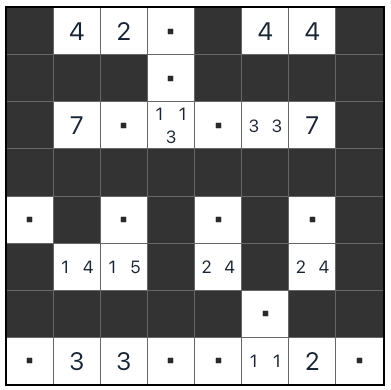Diagonal Consecutive Sudoku Hard
Like this puzzle!
5
3
6
3
7
5
4
9
1
6
9
1
8
6
7
9
5
8
4
6
4
7
7
6
4
1
2
3
4
5
6
7
8
9
?
~
123
1
2
3
Helping solve
Undo
Redo
Delete
0
Hint
Latest score list for #21z6d
Av
Ava a second ago
14'50''
fi
fishing 14 minutes ago
19'7''
pr
programs 37 minutes ago
18'4''
fr
freelance 28 minutes ago
8'3''
se
semrush an hour ago
9'53''
gu
guest an hour ago
19'8''
gu
guest an hour ago
14'21''
Cl
Classes 2 hours ago
11'20''
ov
overtons 27 minutes ago
7'26''
bl
blackboard 34 minutes ago
15'55''
Latest score list for Diagonal Consecutive Sudoku
ma
magento solved puzzle No#3nryx;
15'10''
Re
Rehab solved puzzle No#kd1pq;
9'13''
fr
freelance solved puzzle No#l42ep;
15'0''
Be
Benjamin solved puzzle No#829ke;
15'10''
an
anonymous solved puzzle No#lqwgv;
19'27''
gu
guest solved puzzle No#l42ep;
9'39''
an
anonymous solved puzzle No#kd1pq;
8'8''
Cl
Classes solved puzzle No#lqwgv;
10'38''
gu
guest solved puzzle No#lqwgv;
15'18''
gu
guest solved puzzle No#v0n1y;
15'25''
How to play Diagonal Consecutive Sudoku
Diagonal Consecutive Sudoku Rules
Consecutive Sudoku: Standard Sudoku rules apply (1-9 in each row, column, and box) with the added twist of bars between some squares. These bars mean the numbers in those squares must be consecutive (differ by 1).
Diagonal Consecutive Sudoku Additional Rules:
-
Diagonal Sudoku Rule: Sudoku main diagonals also contain the digits 1 through 9.
Read more: Diagonal Consecutive Sudoku rule & tips
Using the Markings:
Pay close attention to the consecutive markers while placing numbers. If two cells are connected by a bar, the numbers you place in them must differ by exactly 1.
Conversely, if there's no marking between two cells, the numbers in those cells cannot be consecutive.
Diagonal Consecutive Sudoku = Diagonal Sudoku + Consecutive Sudoku.
Privacy Policy Copyright Gridpuzzle © 2024



























